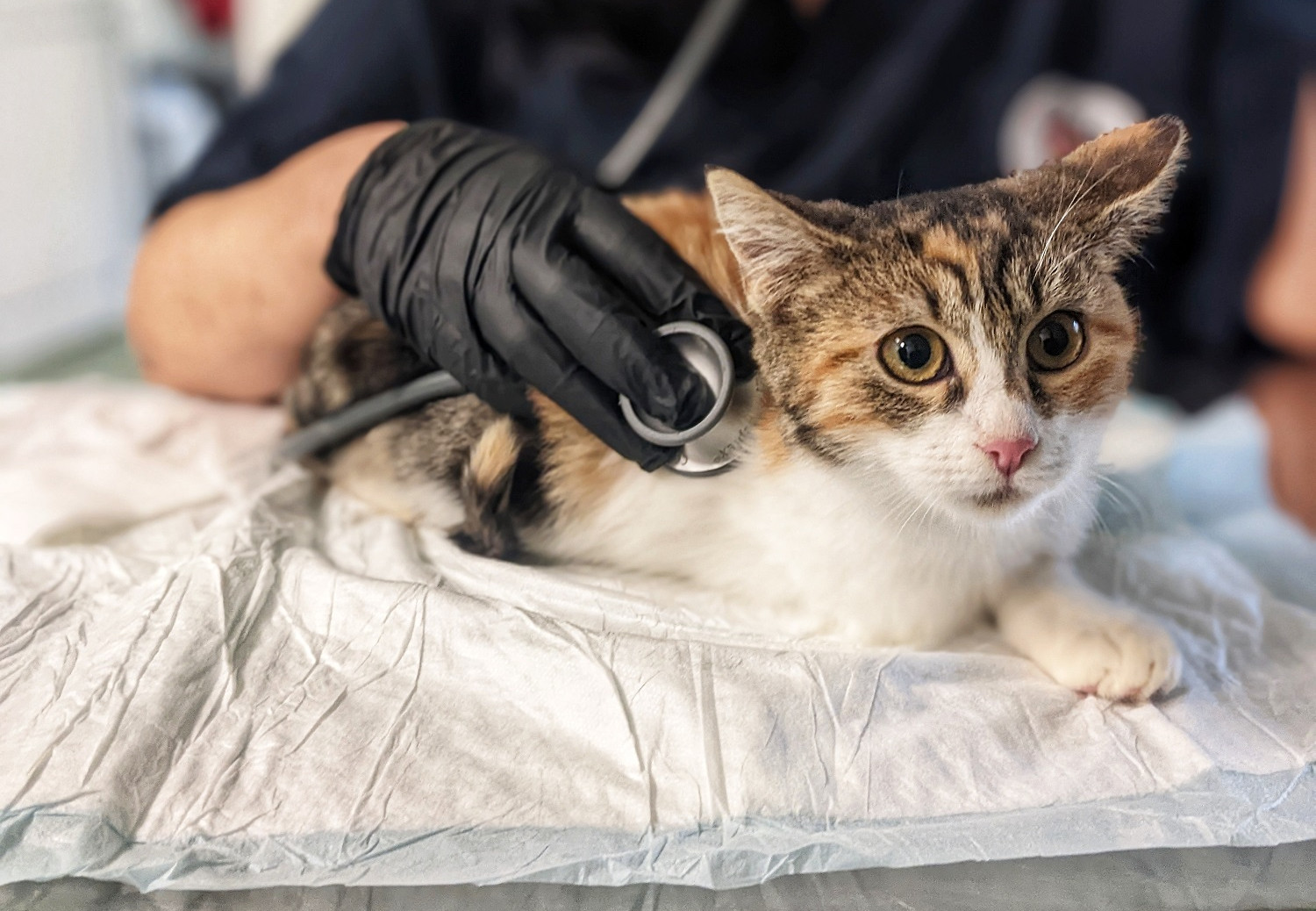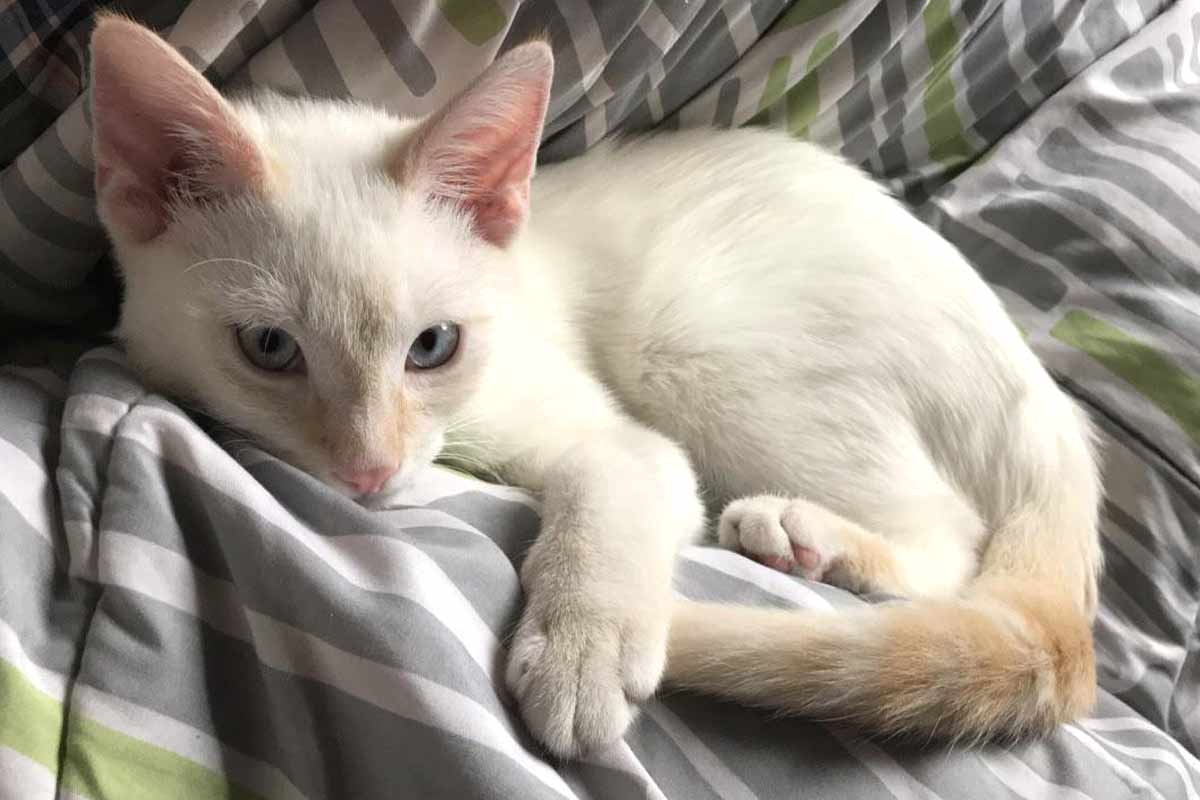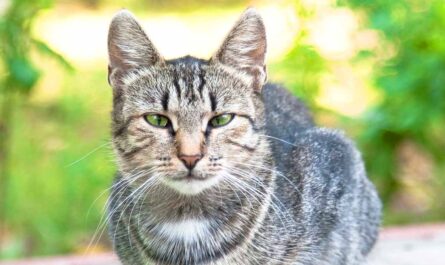Has your feline friend suddenly transformed into a sniffling, sneezing machine? Those adorable wet eyes and constant congestion can be a cause for concern, leaving you wondering what’s causing their discomfort. Fear not, fellow cat lovers! This article is here to shed light on feline upper respiratory infections (URIs), also known as cat flu.
We’ll delve into the common culprits behind these sniffles, from pesky viruses to environmental irritants. We’ll explore diagnostic approaches and treatment options to get your kitty feeling back to their playful, purring self in no time. We’ll also provide helpful tips to ensure your cat’s comfort during recovery and explore preventive measures to keep those URIs at bay. So, grab a cozy blanket, cuddle up with your furry friend, and let’s navigate the world of feline URIs together!
Demystifying the Culprits: Understanding the Causes of Feline URIs
Just like humans can catch a cold, cats are susceptible to upper respiratory infections. These infections can be caused by a variety of factors, and understanding the culprit can help guide treatment decisions. Here, we’ll unveil the usual suspects behind feline sniffles:
Viral Mayhem: The Sneaky Invaders
The most common cause of feline URIs are viruses. Two of the biggest troublemakers are feline herpesvirus (FHV-1) and feline calicivirus (FCV). These viruses are highly contagious and can spread through close contact with infected cats, shared food bowls, or even airborne droplets from a sneeze. Symptoms caused by these viruses can range from mild sniffles and watery eyes to fever, lethargy, and even difficulty breathing.
Bacterial Backup: Adding Fuel to the Fire
While viruses typically take center stage in feline URIs, bacteria can sometimes join the party and complicate things further. A bacterium called Chlamydophila felis can piggyback on a viral infection, making symptoms worse and causing a persistent cough.
Environmental Irritants: Tickling Tiny Noses
Just like us, cats can experience respiratory irritation from environmental factors. Dust, smoke, and strong chemicals can irritate their delicate nasal passages, leading to sneezing, congestion, and watery eyes. It’s important to maintain a clean and well-ventilated environment to minimize these triggers.
Stressful Triggers: When Worries Turn into Sneezes
Stress can take a toll on anyone’s health, and our feline companions are no exception. A stressful event, such as a new pet in the house or a move to a different location, can weaken a cat’s immune system and make them more susceptible to URIs. Providing a calm and predictable environment can help reduce stress and keep their defenses strong.
The Great Sniffle Symphony: Recognizing Feline URI Symptoms
Does your feline friend seem to be conducting a one-cat symphony of sniffles and sneezes? While a little occasional snort might be nothing to worry about, a persistent chorus of coughs and congestion could signal a feline upper respiratory infection (URI). This article equips you with the knowledge to recognize the signs of URI and determine when it’s time to seek veterinary attention.
A Picture is Worth a Thousand Sneezes: Spotting the Signs
Imagine your cat letting out a mighty ACHOO! Followed by a wet, glistening discharge around their nose. These are just a couple of the tell-tale signs of a URI. Here’s a closer look at some common symptoms:
- Sneezing Symphony: Frequent sneezing, especially in rapid succession, is a classic symptom of URI. The sneezes might be forceful or weak, but their persistence is a key indicator.
- Runny Nose Blues: A runny nose, with discharge that can be clear, yellowish, or greenish, is another common sign. Excessive wiping at the nose with their paw can also be a clue.
- Watery Eyes Woe: Red, watery, or squinting eyes often accompany a URI. The discharge might be clear or slightly cloudy, and your cat might paw at their eyes to relieve irritation.
- Coughing Cacophony: A hacking cough, especially after waking up or eating, can be a sign of URI. The cough might be dry or productive, bringing up mucus.
Beyond the Sniffles: A Broader Look at Symptoms
While the signs above are common, a URI can sometimes present with additional symptoms. Here’s what to watch out for:
- Fever Frenzy: A fever, often accompanied by a warm nose and ears, can indicate a URI. Using a pet thermometer at home can help you monitor your cat’s temperature.
- Lethargy Lounging: A noticeable lack of energy or disinterest in usual activities can be a sign that your cat isn’t feeling well.
- Loss of Appetite Blues: If your feline friend seems less interested in their food than usual, it could be due to a sore throat or congestion affecting their sense of smell.
- Difficulty Breathing Distress: Rapid or labored breathing, especially with open-mouth breathing, can be a serious symptom and requires immediate veterinary attention.
Age Matters: Variations in Symptoms
Kittens, adult cats, and senior felines might experience URI symptoms slightly differently. Here’s a quick breakdown:
- Kitten Kouchs: Kittens might have more congestion and difficulty breathing due to their smaller airways. Keep an eye out for wheezing or labored breathing.
- Adult Ache: Adult cats typically exhibit the classic symptoms mentioned earlier.
- Senior Sneezes: Senior cats might have a weaker immune system, making them more susceptible to complications from URI. Watch for lethargy and loss of appetite in addition to other symptoms.
Distinguishing the Diagnosis: When to See the Vet
While some mild URI symptoms might resolve on their own, it’s crucial to seek veterinary attention if your cat shows any of the following:
- Symptoms persist for more than a few days.
- Difficulty breathing or labored breathing.
- Loss of appetite or dehydration.
- Fever.
- Red, swollen, or squinting eyes.
- Kittens or senior cats with any URI symptoms.
Remember, early diagnosis and treatment can help your cat recover quickly and prevent complications. Your veterinarian can determine the cause of your cat’s respiratory issues and recommend the most appropriate course of treatment.
Seeking Veterinary Guidance: Diagnosis and Treatment
Has your feline friend been feeling a bit under the weather lately? Sneezes, watery eyes, and a lack of their usual playful energy can be signs of an upper respiratory infection (URI), also known as cat flu. While it might be tempting to wait things out at home, consulting your veterinarian is the purrfect first step towards a speedy recovery.
The Importance of a Checkup: Unmasking the Mystery
Just like us, cats can experience various types of URIs caused by different viruses or bacteria. A trip to the vet is crucial to pinpoint the exact culprit behind your cat’s discomfort. During the examination, your veterinarian will become your cat’s detective, using their expertise to gather clues.
Diagnostic Tools: Cracking the Case
A thorough physical examination is the first step in the diagnostic process. Your veterinarian will gently check your cat’s ears, nose, throat, and lungs, listening for any abnormalities. In some cases, they might recommend additional tests like swab samples from the nose or eyes to identify the specific virus or bacteria causing the infection. X-rays might also be necessary if they suspect complications like pneumonia.
Taming the Troublemakers: Supporting Your Feline Friend
Unfortunately, there’s no magic bullet to cure viral URIs. However, your veterinarian can recommend a treatment plan focused on helping your cat feel better and supporting their natural defenses as their body fights off the infection. This might include:
- Supportive Care: Medications to soothe a sore throat or eye irritation, along with plenty of rest, can significantly improve your cat’s comfort level.
- Immune System Boosters: Supplements or medications that strengthen your cat’s immune system can help them fight off the infection more effectively.
Antibiotics in Action: Battling Bacterial Backups
While antibiotics won’t fight viruses, they can be crucial in treating secondary bacterial infections that sometimes arise alongside URIs. These infections can worsen your cat’s symptoms and prolong their recovery. Your veterinarian will determine if antibiotics are necessary and prescribe the appropriate course of treatment based on the specific bacteria identified.
Hydration Heroes: Keeping Your Cat Fighting Fit
Just like with any illness, staying hydrated is essential for recovery. Encourage your cat to drink plenty of fresh, clean water. If they’re struggling to stay hydrated on their own, your veterinarian might recommend administering fluids subcutaneously (under the skin) or intravenously (through an IV) in severe cases.
By working together with your veterinarian, you can create a personalized treatment plan to help your cat feel better fast and get back to their usual playful and energetic self.
Comfort & Care: Nurturing Your Cat Through Recovery
Just like us, cats don’t feel their best when they’re under the weather. But fear not, feline fancier! With a little TLC (tender loving care) and some strategic home comforts, you can help your whiskered friend feel better and recover from cat flu in no time.
Creating a Cat Oasis: A Haven for Healing
Imagine a cozy nook, bathed in soft light, with a fluffy bed and all your cat’s favorite things. This is what you’re aiming for when creating a dedicated recovery space for your feline companion. Here’s how to turn a quiet corner into a purrfect haven:
- Location, Location, Location: Choose a quiet, draft-free area away from the hustle and bustle of your home. This allows your cat to rest and recuperate without unnecessary disturbances.
- Bedding Bliss: Provide a comfortable, soft bed with fresh, clean blankets. Consider using a heating pad on low settings (always supervised) for an extra touch of warmth and comfort.
- Familiar Treasures: Surround your cat with familiar objects like their favorite toys or a blanket with your scent on it. These familiar comforts can provide a sense of security and promote relaxation.
- Minimize Stress: Limit interactions with other pets and children during this time. Recovery is all about rest, so avoid activities that might be too stimulating for your cat.
Remember: A calm and comfortable environment is key to promoting healing and a speedy recovery.
Soothing the Sniffles: Bringing Relief from Congestion
Just like a stuffy nose can make us feel miserable, feline congestion can be equally bothersome for your cat. Here are a few ways to offer relief:
- The Power of Humidity: Consider using a humidifier in the room. The cool mist can help loosen mucus and ease congestion, making it easier for your cat to breathe.
- Gently Does It: Avoid using decongestant medications meant for humans on your cat. If you’re concerned about their congestion, consult your veterinarian for safe and effective treatment options.
Remember: By keeping your cat’s environment comfortably moist, you can help alleviate some of the discomfort associated with a stuffy nose.
Tempting Treats: Enticing Your Cat to Eat
Feeling unwell can zap your appetite, and cats are no exception. During recovery, it’s important to tempt your cat to eat, even if it’s just small amounts at a time. Here are some tips to get those taste buds tingling:
- The Power of Aroma: Warm up your cat’s food slightly to release enticing aromas. This can make it more appealing, especially if they’re feeling under the weather.
- Soup-er Idea: Consider offering warmed-up broth or canned food with a higher moisture content. These can be easier to eat for cats with a sore throat or congestion.
- Treat Time: Offer small, enticing treats like cooked chicken or tuna. These can tempt even a finicky eater and provide some much-needed nourishment.
Remember: A well-nourished cat has a stronger immune system to fight off infection. By offering a variety of tempting food options, you can encourage your cat to eat and support their recovery.
Maintaining Hygiene: Keeping Your Cat Clean and Comfortable
Just like us, good hygiene is important for feeling better. Here are some ways to keep your cat comfortable and clean during recovery:
- Wiping Away Worries: Gently wipe away any discharge from your cat’s eyes and nose using a warm, damp cloth. This can help prevent irritation and keep them feeling more comfortable.
- Eye Care Essentials: If your cat’s eyes are crusty or watery, consult your veterinarian for advice on proper cleaning solutions.
Remember: Maintaining good hygiene can help prevent secondary infections and promote faster healing.
TLC Time: Showering Your Cat with Love and Support
While medication and a comfortable environment play a crucial role in recovery, don’t underestimate the power of love and companionship. Here’s how to show your cat you care:
- Gentle Strokes and Soft Words: Spend some quiet time with your cat, offering gentle petting and soothing words. This can provide emotional support and reassurance during their time of need.
- Respecting Boundaries: Pay attention to your cat’s cues. If they seem withdrawn or prefer solitude, don’t force interaction. Let them rest and recuperate at their own pace.
- Patience is Key: Recovery takes time. Be patient with your cat and celebrate even small improvements in their health.

Other Interesting Articles
- How to Make Your Cat Really Happy: 29 Tips You May Try
- How to Train Your Cat to Stop Urine Marking? 12 Tips
- How Do Cats Communicate Each Other? 11 Body Language
- 24 Ways To Know If You Have An Extremely Happy Cat
- What Smells Do Cats Hate: 34 Scents You Must Avoid
- Everything You Need To Know About Cat Territory Marking
- 12 Reasons Why You Should Adopt A Second Cat
- 12 Reasons Cats Pee Outside the Litter Box: How To Solve
- 14 Reasons Why Cats Overgroom: Surefire Ways To Stop It
- Why is My Cat So Clingy? 13 Common Signs: 9 Caring Tips
- Is Your Cat Bored? 12 Common Signs: What You Can Do
- Stress in Cats: Causes, Symptoms, Remedies, Treatment
- 17 Common Signs Your Cat is Lonely: 10 Tips To Help Recover
- 14 Reasons My Cat is Acting Strange & Scared: What to Do?
- How Do Cats Hunt Their Prey, Mice, Bird, Fish, Rat For Food?
- How To Introduce A New Kitten To An Older Cat: 16 Tips
- 15 Reasons Why Do Cats Lick and Groom Each Other
- Domesticated Cats And Big Cats: 24 Similarities, Differences
- 21 Interesting Facts You Should Know About Feral Cats
- How to Socialize a Feral Kitten in 10 Simple Steps



